THE LORD OF THE RINGS: THE RETURN OF THE KING (2003)
Gandalf and Aragorn lead the World of Men against Sauron's army to draw his gaze from Frodo and Sam as they approach Mount Doom with the One Ring.
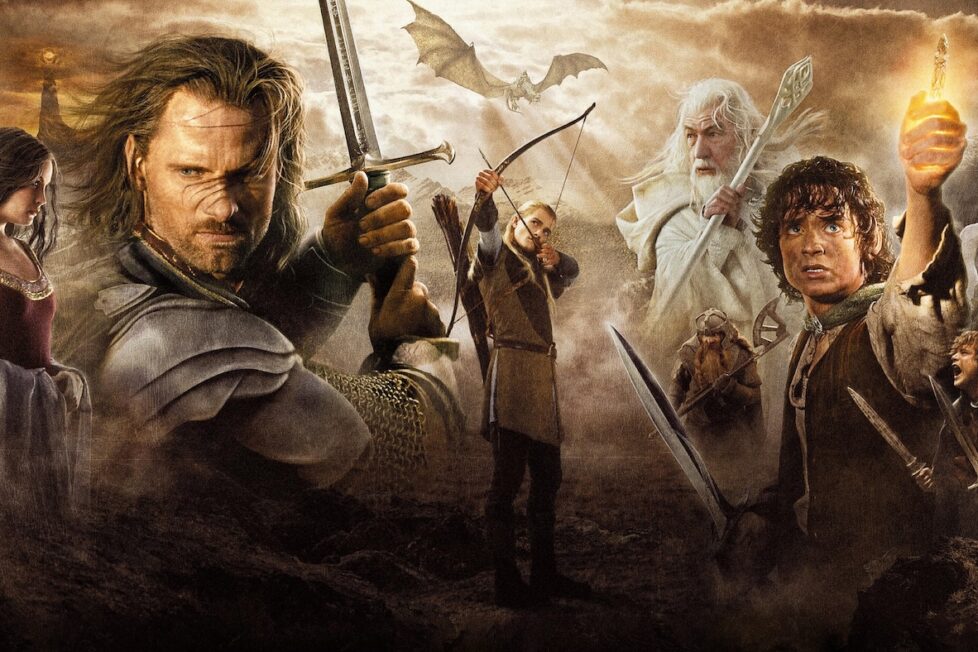
Gandalf and Aragorn lead the World of Men against Sauron's army to draw his gaze from Frodo and Sam as they approach Mount Doom with the One Ring.


Capturing lightning in a bottle is impressive. Containing it? Mind-blowing. Releasing it in a dazzling spectacle? That’s Peter Jackson’s The Lord of the Rings trilogy, a cinematic rarity that ascends with each instalment. It’s not just consistently mesmerizing, it’s steadily more profound.
The Fellowship of the Ring (2001) revolutionized fantasy, a box office Hail Mary that stunned critics and audiences alike. The Two Towers (2002) cemented its place as a longtime fan favourite among the trilogy by taking Fellowship’s worldbuilding and adding additional thematic layers of the darkness and turmoil that war brings to all who find themselves enveloped in its flames. And finally, with The Return of the King, Jackson and company brought the story of Rings to new heights by amplifying absolutely everything about the trilogy—the infernal depths of evil, the radiant light of hope and victory—for a colossally powerful conclusion.
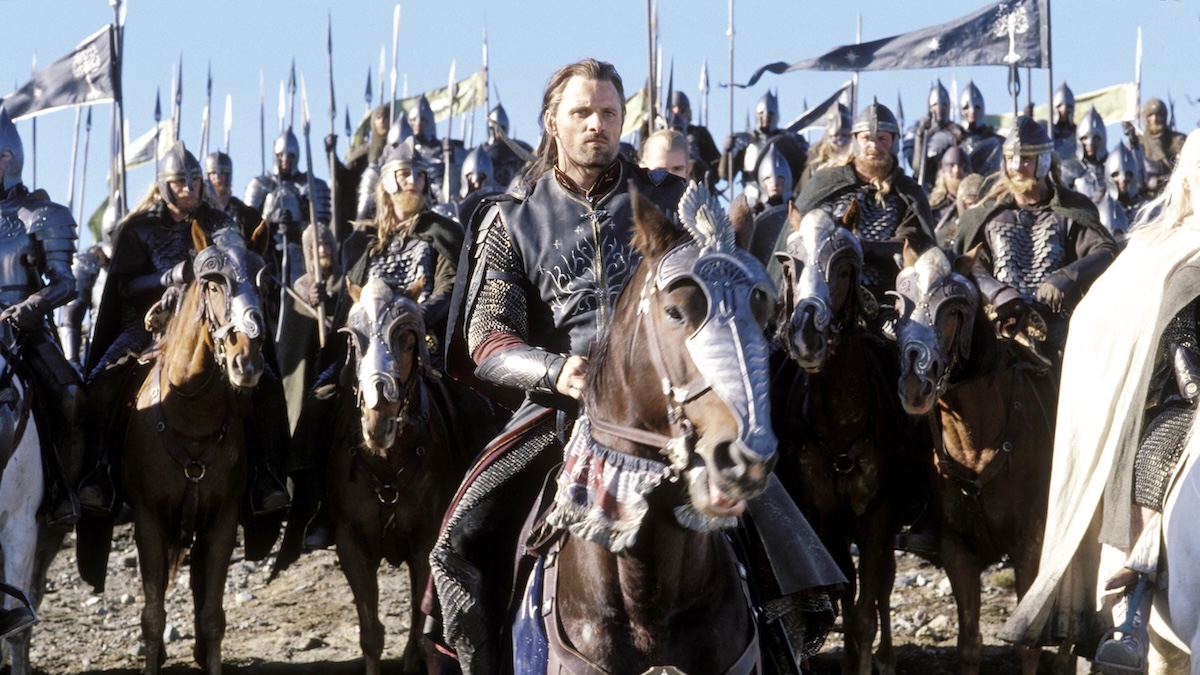
Among the already outstanding company offered by its previous two instalments, Return of the King stands out as an exceptional achievement, largely due to its cumulative feel, which is an incredible feat considering all three instalments were filmed concurrently. This sense of time and consequence builds throughout the film, particularly where the threat of Mordor, and the One Ring, are given more than their full weight. The film itself opens with Smeagol (Andy Serkis, shown in this scene without any motion-capture effects) in his moment of transformation into the demented Gollum over five centuries. A brutal murder of his cousin Deagol kickstarts this transformation, both discovering the Ring on an initially innocent fishing trip in the woods. As time steadily passes, Smeagol’s demeanour changes; he refers to himself by multiple names; he retreats into the Misty Mountains, subsisting on a diet of raw fish; his bodily form becomes more haggard and unsustainable; the only thing on his mind is his “precious,” and will remain so even as Bilbo Baggins (Ian Holm) of the Shire steals it for himself.
So when Frodo Baggins (Elijah Wood) and Samwise Gamgee (Sean Astin) entrust their perilous journey to Mordor to Gollum, the Ring nestled in Frodo’s pocket, it becomes increasingly evident that Gollum will exploit any deception to reclaim his “precious.” His treacherous plan: turn Frodo and Sam against each other and ultimately lure Frodo into the clutches of Shelob, a monstrous spider. The scheme succeeds, for a time. Frodo, manipulated by Gollum’s whispers, casts Sam out, his heart shattered. But when Shelob’s venom paralyzes Frodo, Sam, the ever-loyal friend, defies his banishment and returns to his companion, dragging them both into the hellish epicentre of Mordor, where the Ring is about to become a greater source of danger to the two Hobbits than it ever has been before.
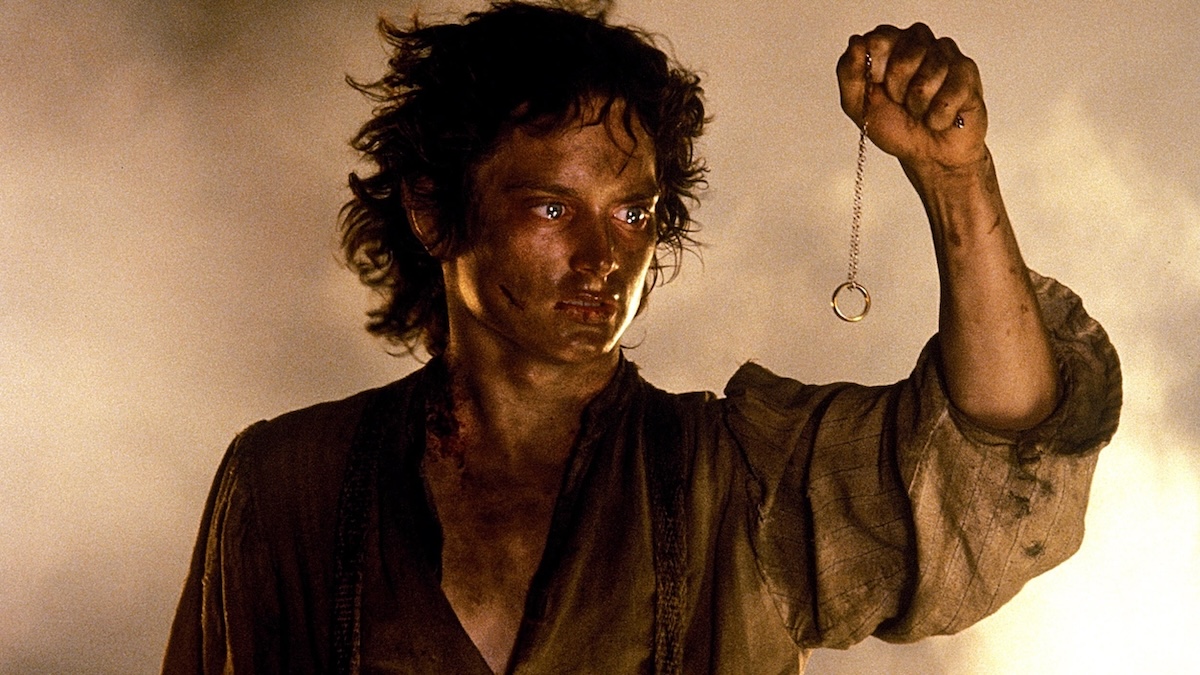
The rest of the Fellowship inch closer to full reunion. Following (Dominic Monaghan), Pippin (Billy Boyd), and the Ents’ apocalyptic assault on Isengard, Gandalf the White (Ian McKellen) guides the remaining companions—Aragorn (Viggo Mortensen), King Théoden of Rohan (Bernard Hill), Legolas (Orlando Bloom), and Gimli (John Rhys-Davies)—to the fallen city’s ruins. There, in a scene notoriously absent from the theatrical release, Saruman the White (Christopher Lee) meets his end at the hands of Grima Wormtongue (Brad Dourif), with Legolas delivering the coup de grâce mere moments later. Gandalf locates Saruman’s palantír, or seeing-stone, and takes it with him. Pippin, overcome by innocent curiosity, peers into the palantír and is confronted by a terrifying vision conjured by Sauron of a burning white tree. Gandalf instantly recognizes it as the symbolic heart of Minas Tirith, Gondor’s towering capital city.
Under the shadow of Mordor, Gandalf and Pippin journey towards Minas Tirith, hoping to rouse its ailing steward, Denethor (John Noble). Burdened by grief and clinging to power, Denethor, father of the fallen Boromir (Sean Bean), remains deaf to Gandalf’s urgent pleas to light the beacons and summon aid. Though Pippin, still reeling from Boromir’s sacrifice, impulsively offers himself in service, Denethor’s pride blinds him to Aragorn’s rightful claim to the throne. Refusing to relinquish his grip on Gondor, he denies the rising tide of darkness on its doorstep.
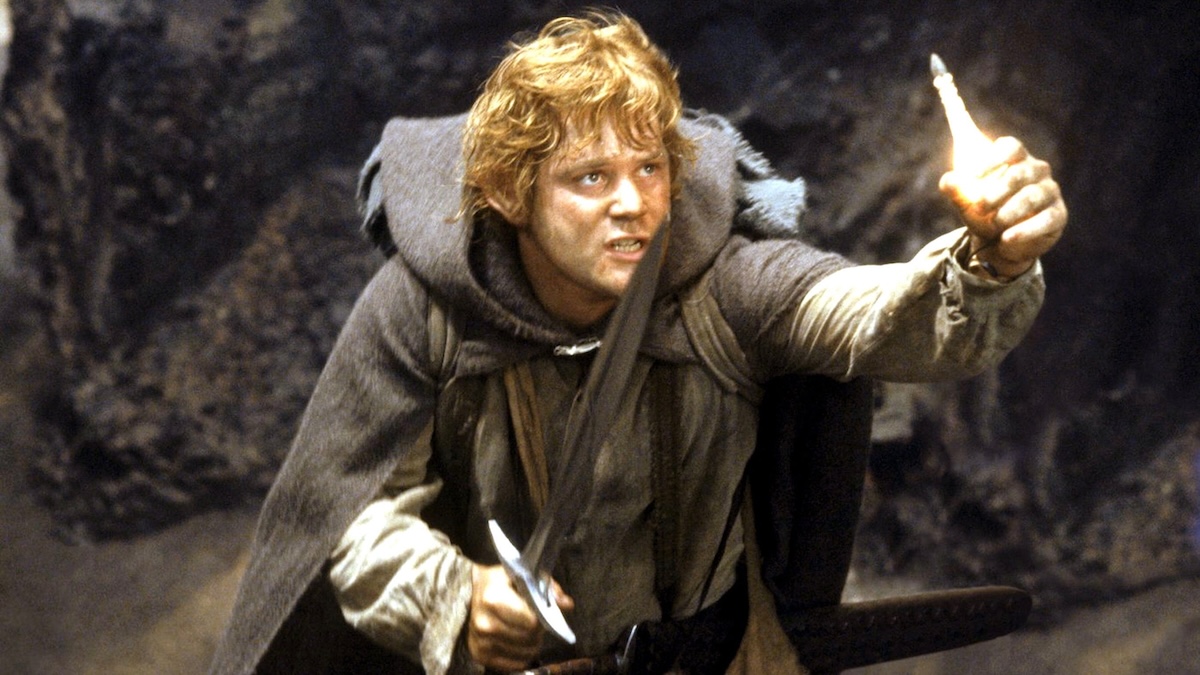
Unbowed, Gandalf entrusts Pippin with a spark of defiance. With nimble fingers, the young Hobbit ignites the beacons, their flames leaping skyward like valiant cries for help. Across the plains, the signals pierce the gathering gloom, reaching the watchful eyes of Rohan. Stirred by the distant glow, the Rohirrim rise, preparing for the dawn of what will be their greatest battle.
The Return of the King wouldn’t be titled as such if it weren’t for how it elevates one character among its ensemble to incredible heights. This character is Aragorn, whose long-alluded-to destiny as the heir to the throne of Gondor slowly begins to manifest itself, affirming the power he was born to hold. As the descendant of Isildur, the very man who severed Sauron’s fingers with the shattered blade Narsil, Aragorn claims a heavy birthright, one he must embrace to its fullest extent, to the very end. Armed with Andúril, the Flame of the West, reforged from the shards of Narsil itself, Aragorn, along with Legolas and Gimli, reaches the Paths of the Dead and encounters the fallen Men of Dunharrow, cursed to remain in their tombs for eternity. Hostilely met by these spirits, Aragorn understands Gondor’s desperate need for all the reinforcements it can get. He promises to free them if they will join him in fending off Mordor’s armies, the very ones who had condemned the Men of Dunharrow to their fate, as they encroach ever closer on the steps of Minas Tirith with each passing day.
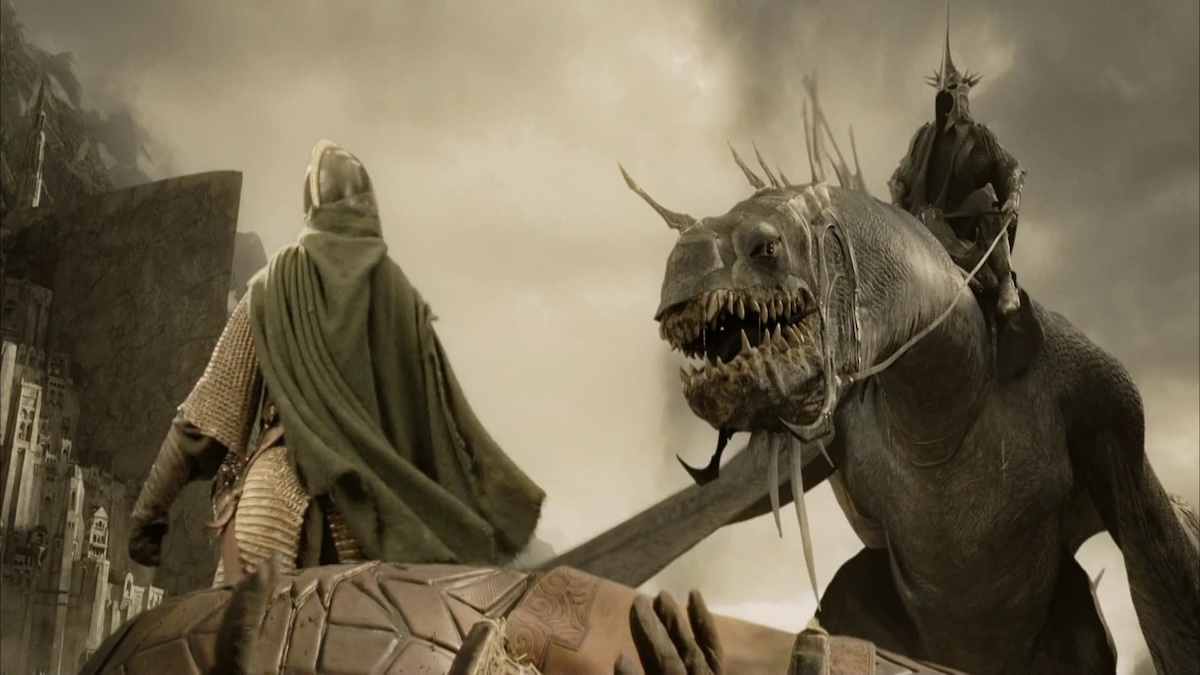
While the bleakness of The Two Towers found its face in the forces of Isengard and the Uruk-hai—themselves a fearsome fighting force unmatched in sheer brutality—the narrative’s deeper descent into Mordor, closer to Sauron, the heart of Middle-earth’s evil, plumbs new depths of unthinkable depravity. Leading the vanguard of Sauron’s armies is the Witch-King of Angmar (Lawrence Makoare), Lord of the Nazgûl, his gnarled iron mask a chilling visage. He wields a blade licked by hellfire and shield-annihilating mace. Under his unrelentingly vicious command, the Orcs unleashed upon Minas Tirith are not only more grotesquely twisted but also marshalled in unprecedented numbers. They overwhelm the streets in suffocating waves, their attacks on civilians blending organized military tactics with unbridled savagery.
Furthermore, Mordor itself stands as an eldritch hellscape. Barren lands engulfed in flames are overseen by the blazing, blinding Eye of Sauron housed in the tower of Barad-dûr, a symbolic manifestation of his omniscient gaze and raging malice. Deformed Orcs and mutilated creatures beyond recognition toil alongside enslaved trolls, while smoke from Mount Doom obscures even the faintest hint of natural light. Jackson and company intuitively grasp Mordor as Tolkien’s vision of Hell itself. While Fellowship and Towers offered glimpses through its dreadful minions and industrial gluttony, the Extended Cut of Return of the King pushes the envelope with the Mouth of Sauron (Bruce Spence). This taunting, psychologically manipulative emissary, his face obscured by a spiny crown helmet except for a scarred, glazed-over mouth, embodies the sheer, porous evil of Mordor with sulfuric pungency and blinding terror, even through the sensorial limitations of a screen.
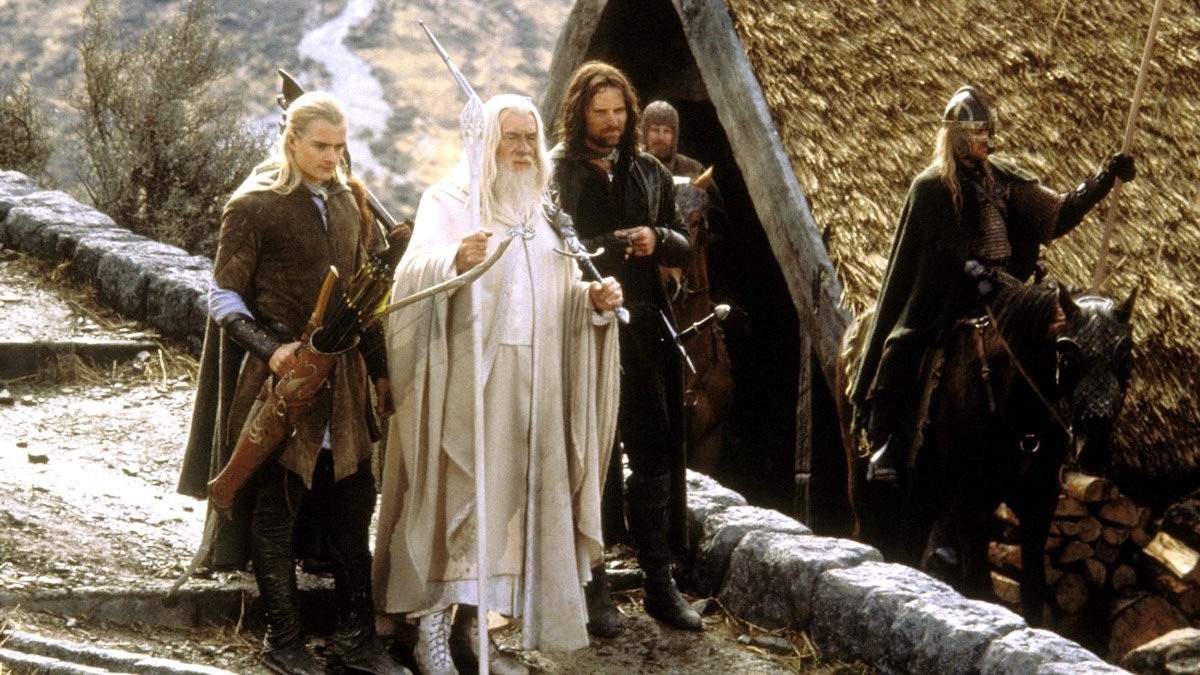
While the elven elegance of Rivendell in Fellowship and the rustic-medieval charm of Rohan in Towers find a regal counterpart in Minas Tirith, its marbled splendour and layered majesty present a different face. This relative austerity, emphasising aesthetic purity, conveys both the city’s vulnerability and its proud, ancient lineage. Royal halls boast sharp lines, stoic stone, and cool, white hues; Gondorian soldiers wear armour etched with the same, their helmets adorned with metallic wings; and the symbolic White Tree stands tall, hinting at both immortality and stark isolation. As Minas Tirith becomes the trilogy’s ultimate battleground, this clash of noble Gondor against the grotesque hordes of Mordor creates perhaps the most striking visual contrast between good and evil yet seen. It’s a fitting bookend to the original battle against Sauron with the Last Alliance of Elves and Men, which saw the Dark Lord separated from his Ring for hundreds of years.
Aside from Frodo and Sam, The Return of the King witnesses the triumphant reunion of the Fellowship, fractured since the trilogy’s heart-wrenching opening. As forces converge for the showdown with Mordor, each character’s interactions and growth culminate, unlocking their collective potential. Merry and Pippin, whom Monaghan and Boyd have excellently portrayed as longtime sources of comedic relief throughout the trilogy, now step into a space where sacrifice and witnessing Saruman’s conquest in The Two Towers have forged fierce loyalty, their resolve hardening as the stakes escalate. Legolas and Gimli, initially adversaries bound by the Elf-Dwarf rift, defy expectations and blossom into devoted friends. Bloom and Rhys-Davies imbue their banter-filled rivalry with moments of sincere camaraderie, each preparing for the fight of their lives—moments that Bloom and Rhys-Davies bring to life with charm and chemistry that makes one fondly and wistfully look back on how far these characters have come.
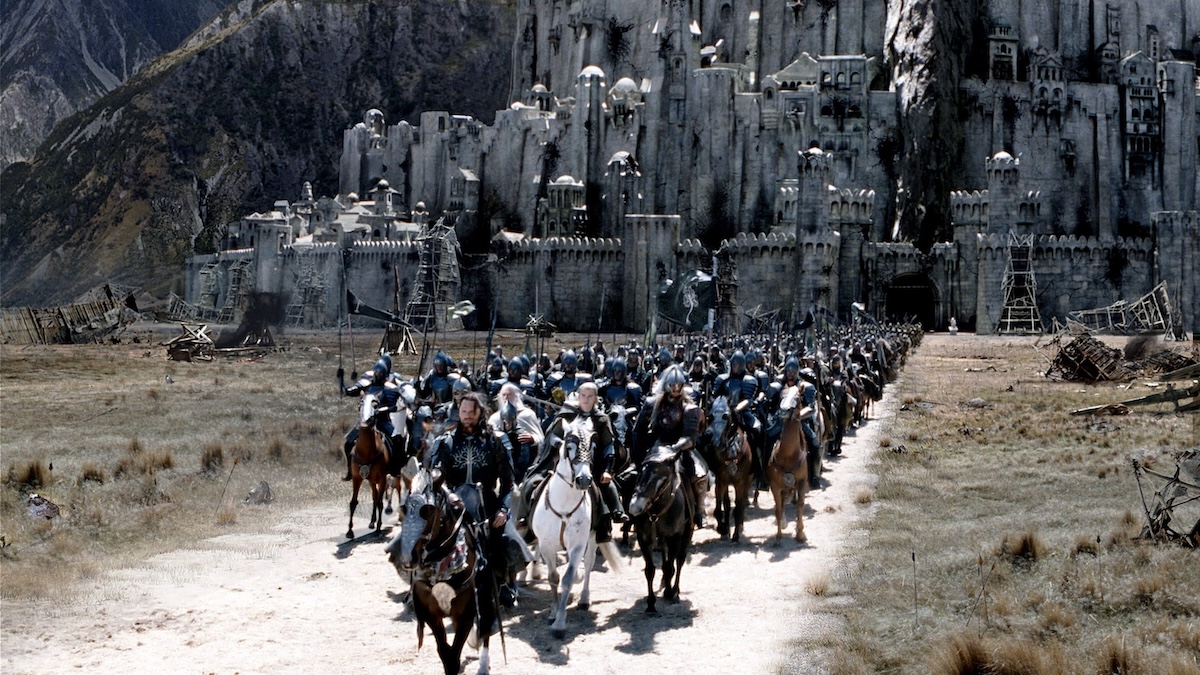
Théoden and Eowyn (Miranda Otto), meanwhile, continue to represent the forces of Rohan in this trilogy, and like the rest of the ensemble, also continue to reaffirm the true potential hiding within their characters. Bernard Hill brilliantly culminates Théoden’s character as one who’s finally eased himself back into the mantle of King after being held in Saruman’s grasp for so long; his sagacity and devotion to his people have now added to it a willingness to sacrifice for a nation not of his own, an expansion of his generosity into a newer dimension that finally allows Théoden to be a man fully worthy of the title he possesses. Meanwhile, Otto’s turn as Eowyn is one of a woman who grows into the warrior she has always wanted to be; ever the one to be turned down when an opportunity to fight arises, Eowyn makes her stand against the worst that Mordor has to offer, and not only valiantly faces it head-on, but does so with a vulnerability that helps us understand that true courage is not even remotely about the absence of fear.
As for Gondor, Noble injects a degree of acerbic venom into Denethor’s unceasing air of corruption that makes him a force of disgust and cowardice, even outside the vile method of consuming tomatoes he exhibits in one particularly iconic scene. In contrast, David Wenham’s Faramir is drenched in the twin sorrows of envy and despair, yearning for his father’s approval after Boromir’s sacrifice. And of course, McKellen’s classic portrayal of Gandalf now sees the White Wizard stepping into the mantle of general for the armies of Gondor, taking his optimism, wisdom, knowledge of the enemy, and willingness to fight to the end for the right cause in a way that displays Gandalf’s full potential as a leader.
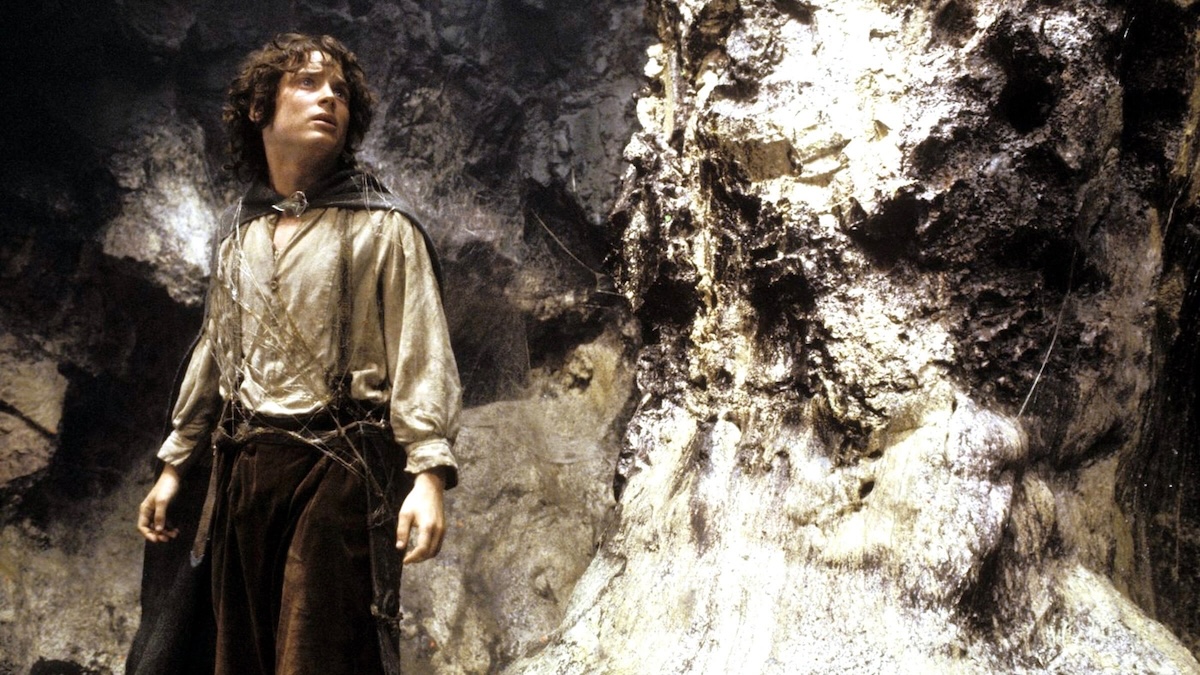
In the trenches of Mordor, meanwhile, Frodo and Sam plunge headfirst into the abyss’s depths, experiencing a vulnerability unmatched within the entire trilogy. Elijah Wood’s portrayal of Frodo takes a darker turn than previously seen. As the Ring’s physical weight burdens him and its seductive whispers tighten their grip on his mind, Frodo harshly rejects those who offer aid. His Hobbit spirit, already burdened with modest aspirations, hangs precariously on the precipice of yielding to the darkness and embracing the illusory power the Ring’s whisperings promise.
But it’s Astin’s performance of Sam that cements his place as the emotional heart of the Lord of the Rings trilogy, as it’s Sam’s undying loyalty and love for Frodo, even at the edge of the void itself, and even as he gets hurt by Frodo’s corruption time and time again, that gives The Return of the King its most moving moments and allows the two characters to persevere further into the sulfuric fires of Mount Doom, step-by-painful-step. Even as Andy Serkis’s iconically vile turn as Gollum takes a further plunge into openly sadistic cunning, and even as the Ring’s presence draws the attention of the darkness to Frodo and Sam, it’s the Hobbits’ way of looking out for each other through it all that fends off the horrible risk of betrayal and allows the Fellowship to steadily approach a victory that seems obscured and impossibly treacherous to obtain.
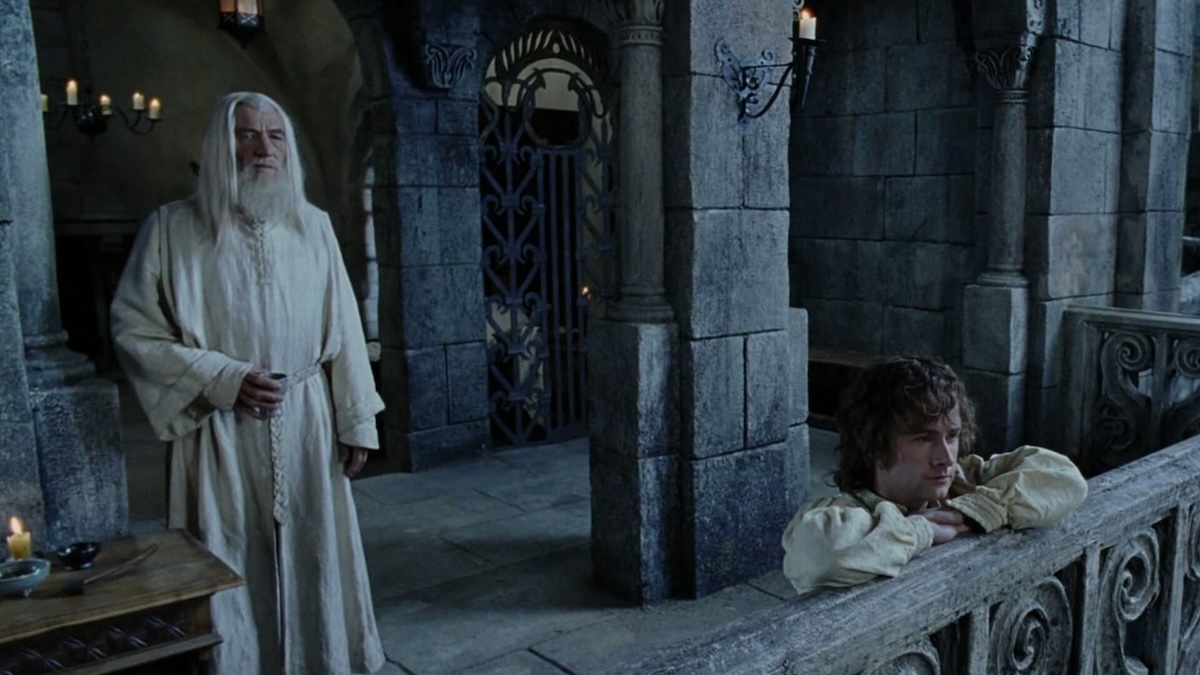
By the conclusion of this legendary trilogy, even among the characters who finally attain their full potential, it’s Aragorn, son of Arathorn and heir to the throne of Gondor, who shines the brightest. Throughout the previous two films, Aragorn has displayed immense nobility and moral fortitude, qualities that finally receive their due in Return of the King. Here, his romance with the Elven Arwen (Liv Tyler) takes on a deeper significance, marked by sacrifice. Arwen relinquishes her immortality to be with Aragorn, a decision that ultimately prompts her father, Elrond (Hugo Weaving), to bestow upon him the reforged blade Andúril and guide him towards embracing his destiny.
And embrace it he does. Aragorn’s leadership blossoms as he rallies the dead of Dunharrow to his side, while his nobility shines even brighter in his willingness to draw Sauron’s entire army towards the combined forces of the Fellowship, Rohan, and Gondor. This buys Frodo and Sam invaluable time to destroy the One Ring. Viggo Mortensen imbues Aragorn with a power never before seen; his performance in Return of the King is a masterful culmination of everything that made Aragorn so compelling throughout the trilogy. It elevates him from an enigmatic, seemingly aimless Ranger to the rightful King of Gondor, the very figure Sauron fears the most.
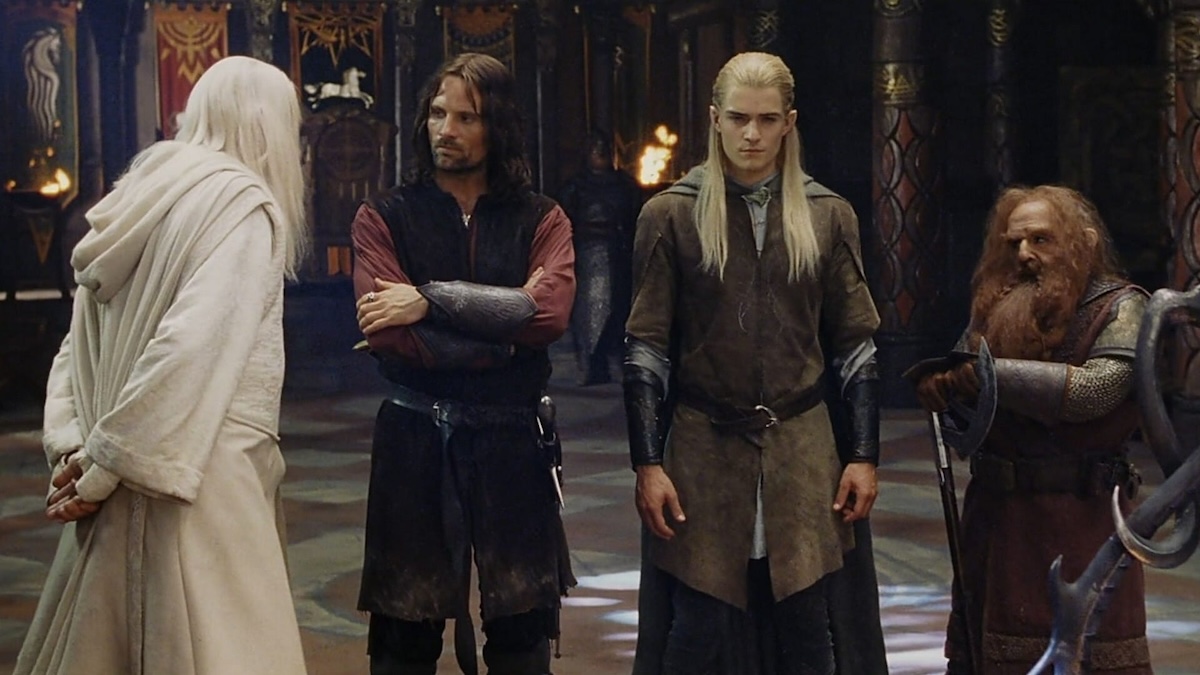
Here we return one last time to the legendary soundtrack of Howard Shore, operatic in scale and unforgettable in its extensive usage of leitmotifs associated with the various themes, ideas, and characters scattered throughout the sheer scope of this trilogy. Every thematic thread finds its final flourish in Return of the King, resplendent in full orchestral adornment. The Rohan’s eight-note motif rings out proud, the Nazgûl’s brass and choral descents cast their chilling shadows, the One Ring’s sinister strings slither and twine, and the Fellowship theme crescendos anew, its triumphant refrain swelling with each step closer to their reunited wholeness. It’s a potent musical valedictory, embracing every melodic whisper uttered over countless tracks, wielding each motif with masterful impact, and wasting not a breath in ensuring every theme receives its final, resounding fanfare.
Even considering only the two major battles on Minas Tirith and Mordor, the film delivers such a definitive and satisfying conclusion that little else feels essential. While Helm’s Deep showcased scale and storytelling within limited boundaries, the final battles of Return of the King expand upon them, colliding multiple armies on a single stage. Mordor’s siege of Minas Tirith, Rohan’s desperate arrival, the overwhelming presence of the Army of the Dead, and Aragorn’s march on the Black Gate—each unfolds as pure spectacle, an escalating series of brutal yet awe-inspiring clashes that surpass any before them in sheer scope. Jackson and his team frame these battles and moments of both defeat and triumph with an unmatched majesty that remains the envy of modern blockbuster filmmakers. They serve as a testament to how flawlessly they stuck the landing after two films of already towering scale.
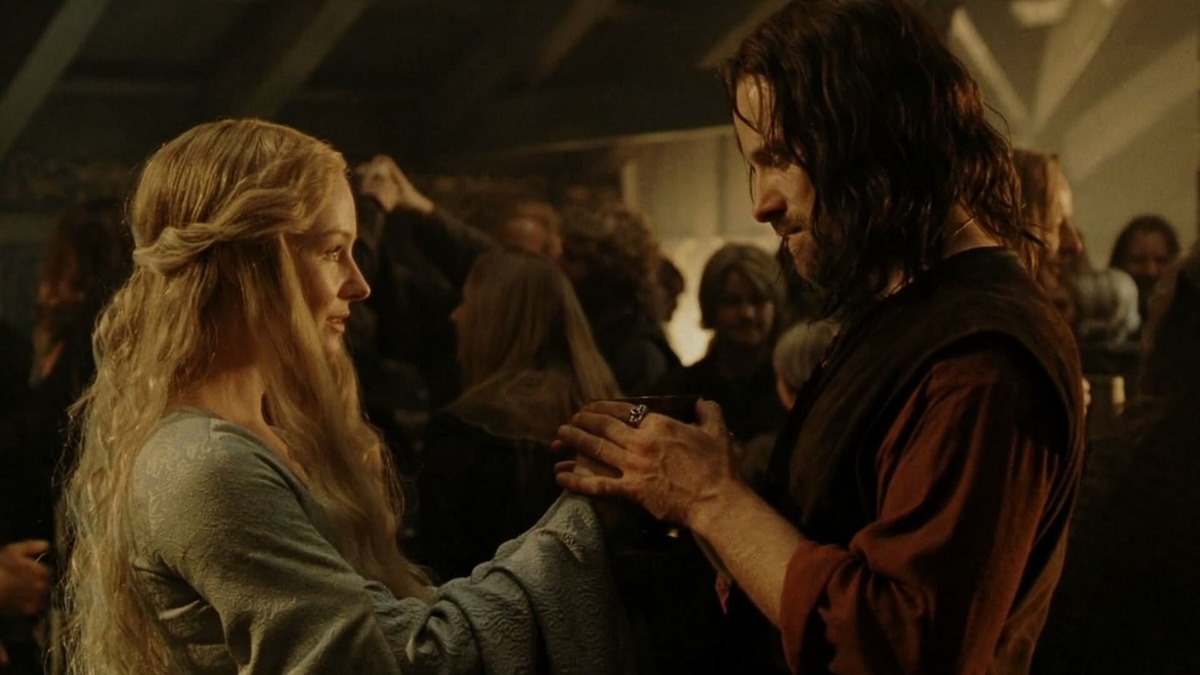
And stick the landing they very much did. In the months after The Return of the King‘s release, audiences and critics alike grasped that a major era in cinematic history had reached its triumphant finale. Grossing over 10x its $94M budget, its $1.16BN box office haul cemented its place as the highest-grossing film of all time back then. In terms of accolades, The Return of the King made cinematic history, securing an astonishing 11 nominations at the 76th Academy Awards and achieving the grand slam by winning every single one, including ‘Best Picture’. This feat has only been matched by Ben-Hur (1959) and Titanic (1997). The shadow The Lord of the Rings trilogy casts over modern fantasy/sci-fi blockbusters wouldn’t be as imposing without a conclusion as magnificent as The Return of the King. Cinematic trilogies live and die by their final chapters, and The Lord of the Rings was blessed with a finale of astonishing power. Its stylized and narrative spectacle bedazzled audiences worldwide, receiving universal acclaim from an industry that had never witnessed anything like it before.
For the past two decades, no filmmaker has even come close to replicating the sheer vision and power of Peter Jackson’s The Lord of the Rings. Countless attempts have been made, some even drawing directly from Tolkien’s universe. Amazon’s spectacularly ill-received The Rings of Power TV series stands as a valiant but misguided effort, while derivative works like Rebel Moon (2023) tarnish the legacy of Tolkien’s rich literary source by shamelessly borrowing its elements. Even amidst recent successes in epic sci-fi and fantasy, such as Denis Villeneuve’s masterful Dune: Part One, it’s hard to overstate the audacious gamble and potential pitfalls of adapting The Lord of the Rings and the cohesive masterpiece it ultimately became. A decade later, Jackson’s own attempt to recapture that magic with The Hobbit trilogy backfired spectacularly. Stretching a children’s book into an overlong, universally criticised epic missed the mark entirely, failing to grasp the essence of what made its predecessor so enchanting.
Few cinematic achievements hold a candle to The Lord of the Rings’ revolutionary spirit, audacious risks, and ever-deepening wonder. Its impact on fantasy in film, television, and beyond remains undeniable, a legacy poised to echo far beyond the next 20 years. As a trilogy of films, and also as a story of filmmaking at its highest level of technical excellence and unbridled creative passion, The Lord of the Rings will forever be an immortal, everlasting testament to the power of cinema at its absolute, indisputable height.
NEW ZEALAND • USA | 2003 | 201 MINUTES (THEATRICAL) • 251 MINUTES (EXTENDED) | 2.39:1 | COLOUR | ENGLISH • QUENYA • OLD ENGLISH • SINDARIN

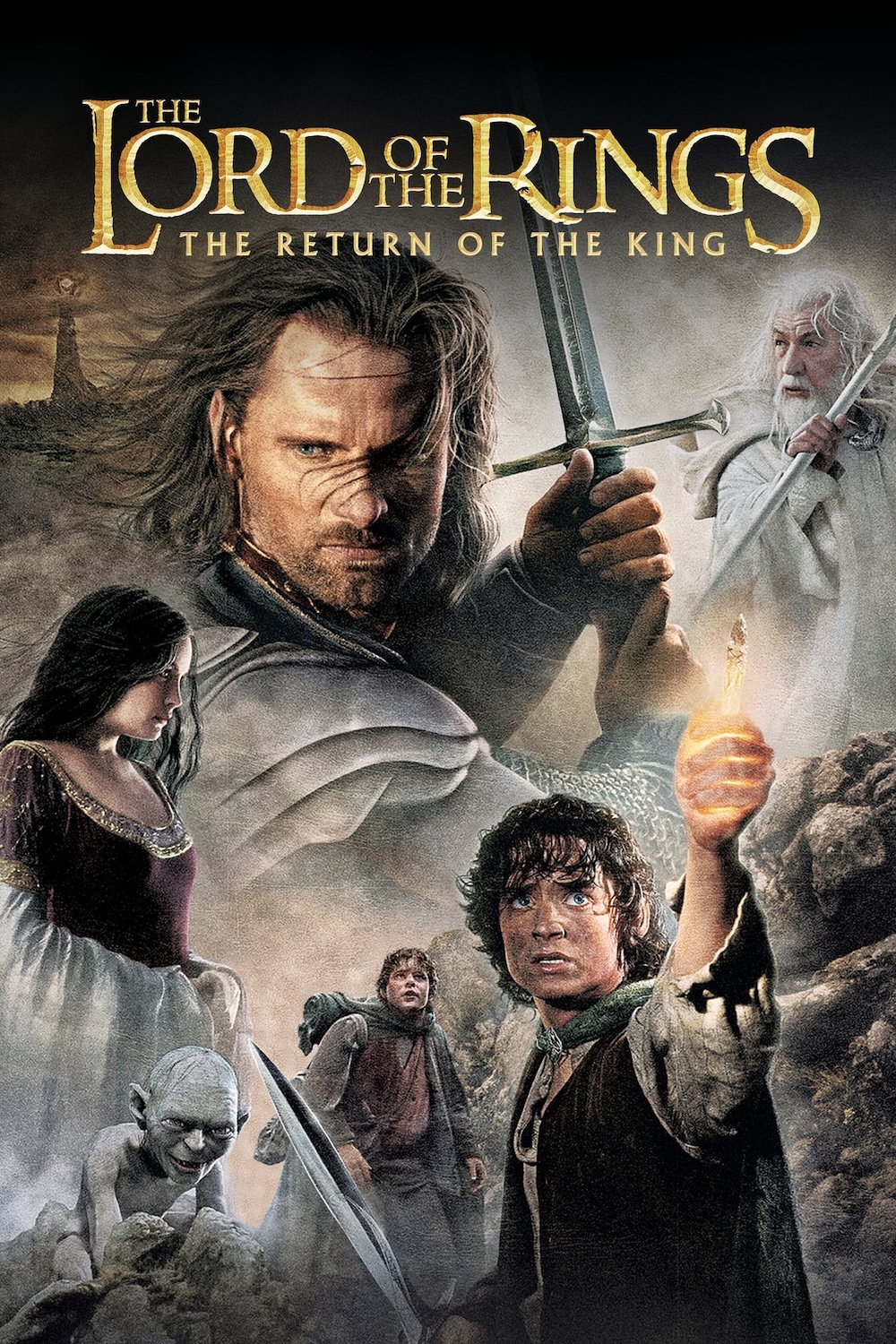
director: Peter Jackson.
writers: Fran Walsh, Philippa Boyens & Peter Jackson (based on the novel by J.R.R Tolkien).
starring: Elijah Wood, Ian McKellen, Liv Tyler, Viggo Mortensen, Sean Astin, Cate Blanchett, John Rhys-Davies, Billy Boyd, Dominic Monaghan, Orlando Bloom, Christopher Lee, Hugo Weaving, Bernard Hill, John Noble, David Wenham & Andy Serkis.
